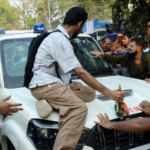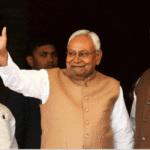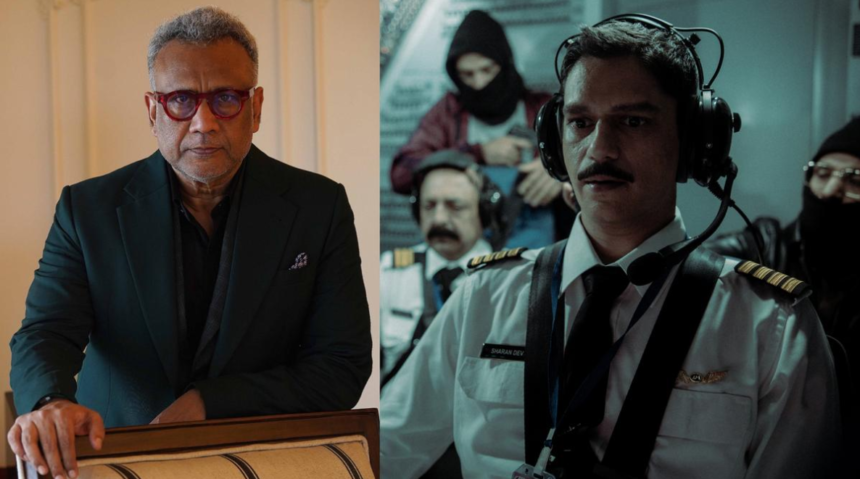Introduction: A Nation’s Memory Revisited
The Kandahar Hijack of Indian Airlines Flight IC 814 in December 1999 remains one of the most harrowing episodes in India’s modern history. The nation watched in disbelief as the aircraft, en route from Kathmandu to New Delhi, was commandeered by terrorists and diverted to Kandahar, Afghanistan. The eight-day ordeal ended in a controversial prisoner swap, shaking the nation’s morale and sparking intense debates about the government’s handling of the situation.
Nearly 25 years later, filmmaker Anubhav Sinha is bringing this traumatic event back into the public consciousness with his upcoming film, IC 814: The Kandahar Hijack. Known for his fearless exploration of complex social and political issues, Sinha has set out to depict the hijacking in a way that is both truthful and unvarnished. In this article, we explore Sinha’s approach to this sensitive subject, the challenges he faced in portraying it, and the broader implications of revisiting such a dark chapter in India’s history.
Anubhav Sinha: A Director Committed to Truth
Anubhav Sinha has established himself as a filmmaker who doesn’t shy away from controversial topics. From exploring communal tensions in Mulk to confronting caste discrimination in Article 15 and gender violence in Thappad, Sinha has consistently used his films as a platform to challenge societal norms and provoke thought. His films are known for their unflinching honesty, often leaving audiences with difficult questions about the world they live in.
With IC 814: The Kandahar Hijack, Sinha is taking on a subject that is not only deeply sensitive but also fraught with political and emotional complexity. The hijacking of IC 814 is more than just a historical event; it is a wound that has yet to fully heal. The incident raised serious questions about national security, the government’s decision-making process, and the cost of negotiating with terrorists.
Sinha has made it clear that his goal with this film is not to glorify or vilify any of the individuals involved but to present the events as they happened, as truthfully as possible. “I’m not in the business of saving or glorifying people,” Sinha has stated. “My job is to tell the truth, as much of it as I can find, and let the audience make up their minds.” This commitment to truth is at the core of Sinha’s filmmaking ethos, and it is what drives his approach to IC 814.
The Challenges of Portraying a National Trauma
Depicting the hijacking of IC 814 on screen is a formidable task. The incident is still a source of pain and anger for many Indians, and any attempt to portray it risks reopening old wounds. Sinha is acutely aware of the emotional weight of the story he is telling and the responsibility that comes with it.
One of the biggest challenges Sinha faces is balancing the need for dramatic storytelling with the imperative to remain truthful to the facts. While the core events of the hijacking are well-documented, there are many aspects of the story that are open to interpretation. Sinha must navigate these complexities carefully, ensuring that the film remains accurate without resorting to sensationalism.
To achieve this, Sinha has reportedly conducted extensive research, consulting with experts and speaking with individuals who were directly involved in the hijacking. This research has been crucial in helping him understand the intricacies of the situation and the pressures faced by those who were tasked with resolving the crisis.
However, Sinha also acknowledges that a film is not a documentary, and some degree of creative license is necessary to bring the story to life on screen. This includes dramatizing certain events, condensing timelines, and creating composite characters. The challenge lies in ensuring that these creative choices do not distort the truth or misrepresent the events.
Balancing Fact and Fiction
Sinha’s commitment to truth is evident in his approach to the film’s narrative structure. He has made it clear that while the film will feature dramatic elements, it will not stray from the core facts of the hijacking. This means staying true to the timeline of events, accurately portraying the decisions made by the Indian government, and faithfully representing the experiences of the passengers and crew on board the hijacked aircraft.
One of the key aspects of the film will be its exploration of the moral and ethical dilemmas faced by those involved in the crisis. The decision to release three terrorists in exchange for the hostages was a controversial one, and it remains a topic of debate to this day. Sinha’s film will delve into the internal debates within the government, the pressure from the hostages’ families, and the broader implications of the decision to negotiate with the hijackers.
By focusing on these dilemmas, Sinha aims to create a film that goes beyond a simple retelling of events. Instead, he seeks to explore the human side of the story, examining how different individuals responded to the crisis and the impact of their decisions on the lives of those involved.
Depicting the Human Cost of Terrorism
At its core, the story of IC 814 is a human one. The hijacking was not just a national tragedy; it was a deeply personal ordeal for the 176 passengers and crew on board the aircraft and their families. For eight days, these individuals lived in a state of fear and uncertainty, not knowing if they would ever return home.
Sinha’s film will undoubtedly focus on the emotional toll that the hijacking took on these families. Through their stories, the film will bring a human element to the incident, highlighting the personal sacrifices and the enduring trauma that many of them continue to live with. By giving voice to the families, Sinha ensures that the film is not just about the political and strategic aspects of the hijacking but also about the human cost of terrorism.
The Role of the Media
Another critical aspect of the IC 814 hijacking was the role of the media. The incident played out in real-time on television screens across India, with news channels providing continuous coverage of the unfolding crisis. This constant media attention added to the pressure on the government and the negotiators, influencing public opinion and shaping the narrative of the event.
Sinha’s film is expected to address the media’s role in the hijacking, exploring how the 24/7 news cycle affected the handling of the crisis. The film may also raise questions about the ethics of media coverage in such situations, where the line between reporting the news and sensationalizing it can become blurred.
The Kandahar Hijack By examining the media’s role, Sinha is likely to provide a broader commentary on the relationship between the press, the government, and the public in times of national crisis.
IC 814 in the Context of India’s Fight Against Terrorism
The hijacking of IC 814 was a pivotal moment in India’s fight against terrorism. It exposed vulnerabilities in India’s security apparatus and highlighted the challenges of dealing with a well-organized and determined terrorist group.
In the years since the hijacking, India has taken significant steps to strengthen its counterterrorism measures. However, the incident remains a stark reminder of the constant threat posed by terrorism and the need for vigilance and preparedness.
Sinha’s film is likely to place the hijacking in the broader context of India’s fight against terrorism, exploring how the incident shaped subsequent policies and strategies. The film may also raise important questions about the balance between security and civil liberties, and the role of the state in protecting its citizens.
The Broader Implications of Revisiting the IC 814 Hijacking
IC 814: The Kandahar Hijack is more than just a film; it is an opportunity for the nation to revisit a traumatic event and reflect on the lessons learned from it. The film has the potential to spark debates about the handling of the hijacking, the decisions made by the government, and the broader implications of negotiating with terrorists.
For those who lived through The Kandahar Hijack film will likely evoke strong emotions, as it brings back memories of a time when the nation was gripped by fear and uncertainty. For younger viewers, the film will serve as an important history lesson, shedding light on a defining moment in India’s recent past.
By revisiting the hijacking, Sinha is encouraging a national conversation about the events and their aftermath. The film may prompt a re-examination of India’s approach to terrorism and the measures in place to prevent such incidents in the future.
Conclusion: A Bold and Necessary Film
Anubhav Sinha’s IC 814: The Kandahar Hijack is shaping up to be a bold and necessary film. By taking on this challenging subject, Sinha is demonstrating his commitment to truth and his belief in the power of cinema to provoke thought and spark dialogue.
As the film’s release approaches, there will undoubtedly be discussions about its portrayal of the events, the creative choices made by Sinha, and the impact of revisiting such a traumatic episode. However, one thing is certain: IC 814: The Kandahar Hijack will be a film that refuses to shy away from difficult questions and that strives to present a truthful and balanced account of a moment that shook the nation.
In the hands of a director like Anubhav Sinha, this story is sure to be handled with the sensitivity and integrity it deserves, making it a significant addition to the annals of Indian cinema. ALSO READ:- Telegram CEO Pavel Durov’s Arrest: Russia-France Ties Hit New Low, Moscow Says 2024





